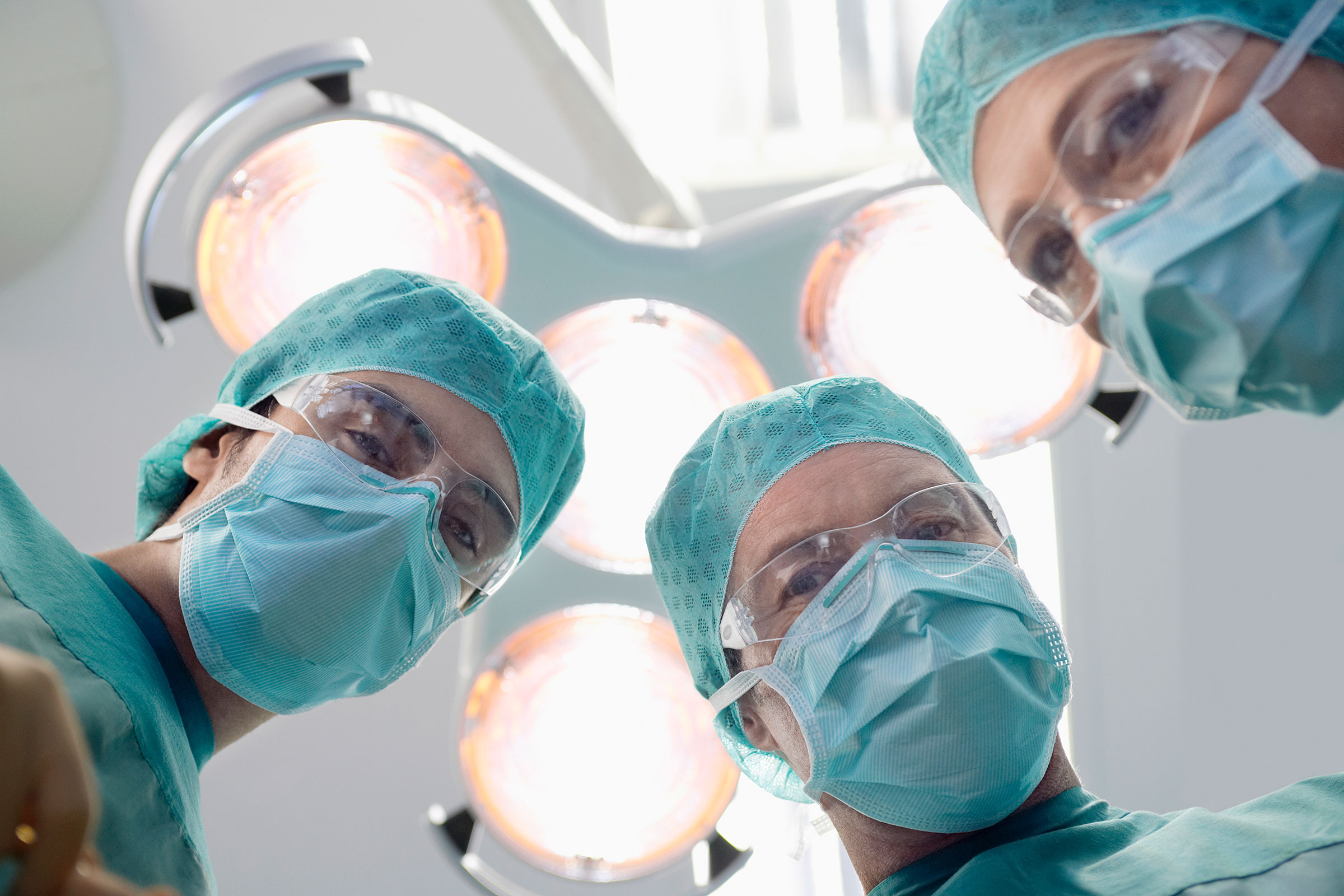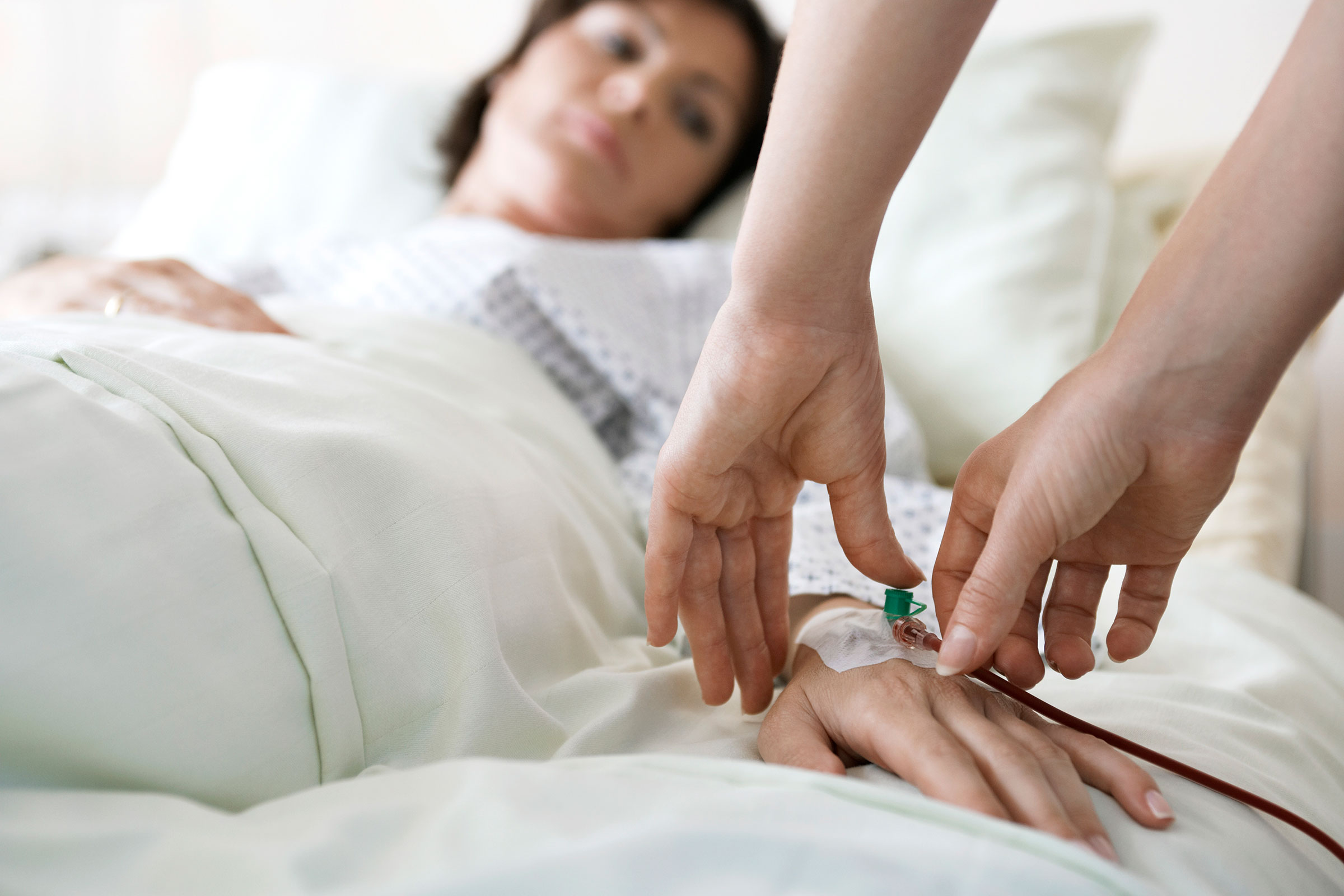
17 Oct How Infections Spread Through the Healthcare Facility
In a healthcare facility, infections can spread from almost anywhere. As incredible as that sounds, it is true. Take a look at a typical healthcare environment: there are many surfaces that multiple people – staff, patients, and visitors – all touch numerous times. Elevator buttons, doorknobs, countertops in exam rooms, overbed tables in hospitals, operatory chairs in a dental exam room are touched by almost everyone.
Understanding the Chain of Infection
In order to understand how infections are spread, let’s look at the chain of infection. First, there must be organisms that are capable of infecting humans. Common organisms include bacteria, fungi, protozoa, helminths, viruses, and prions. Organisms must not only be able to survive outside of the human body, but they must also be capable of entering the body, multiply, and cause infection.
The next link in the chain of infection is a reservoir that contains the organisms. This ‘reservoir’ can be an inanimate object in the healthcare facility, water, or a person. For example, if someone places a dirty instrument on the counter in an exam room, there may not be visible blood or body fluids, but the organisms from that instrument are on the counter along with the instrument.
A healthcare staff member places the instrument into a transport bin and removes their gloves. The instrument is transported to the dirty utility room while awaiting reprocessing. The healthcare worker returns to the exam room to clean the room and set up for the next patient.
Along the way to the exam room, the healthcare worker opens doors, stops to chart something at the computer, and talks to a colleague. Back in the room, they put on fresh gloves and, using a disinfectant wipe, cleans the room. The exam table paper is pulled down over the table, and one disinfectant wipe is used to wipe off the counter and the table next to the exam table. The healthcare worker may not be aware of the amount of time the disinfectant must remain on a surface to effectively kill organisms.
Doorknobs, drawer and cabinet handles, computer keyboard, computer mouse, and light switches aren’t disinfected due to time constraints. In this example, there are several frequently touched areas of the room that haven’t been disinfected and the surfaces that were quickly wiped with a disinfectant could still contain pathogenic organisms. Did you notice that the healthcare worker didn’t clean their hands during this entire scenario?
In the above example, the next patient to enter the exam room has a small wound on their leg. The Provider takes gloves out of the box, places the gloves on the counter to check something in the electronic medical record, then puts on gloves to examine the wound. Remember the poorly disinfected counter? The gloves were placed on that same counter and then contacted the wound. The gloves could potentially introduce pathogenic organisms into the wound from the poorly disinfected counter.
How Transmission Works
This scenario helps to describe the chain of infection. We already discussed the organism (or causative agent) and the reservoir. The portal of exit is the next link. The organism needs a way to leave the reservoir to infect a person. In the above example, the portal of exit can be the healthcare worker’s hands or an inanimate object such as a piece of medical equipment. The gloves that were placed on the counter then act as the portal of exit or how the organisms leave the reservoir.
The mode of transmission is the next link in the chain. Transmission can be through direct or indirect contact. In this case, the organisms were potentially transmitted through indirect contact since the patient didn’t directly contact the infecting agent. Indirect contact signifies that some intervening action moved the organism from the reservoir toward the patient. This is usually where the hands of healthcare workers are implicated due to lack of hand hygiene when needed.
The organisms must have a way to enter the susceptible host, which is known as the portal of entry. In the above scenario, the open wound allows the organism to do just that. Patients with an intravenous (IV), a catheter, or a wound are all examples of great portals of entry for organisms. Generally speaking, any break in the skin, our main protective barrier, can allow organisms to enter and wreak havoc.
The last ‘stop’ in the chain of infection is a susceptible host. Susceptible hosts come in all ages, shapes, and sizes. Patients going to an ambulatory setting may or may not mention they are immunocompromised or may not think it important in that setting. Hospitals have the advantage of obtaining a complete medical history where the patient’s medical status may be more easily determined.
Simply put, you never know which patients are a ‘susceptible host’. So, it is best to practice good hand hygiene and thoroughly disinfect environmental surfaces and patient care equipment in an effort to interrupt that chain of infection!

